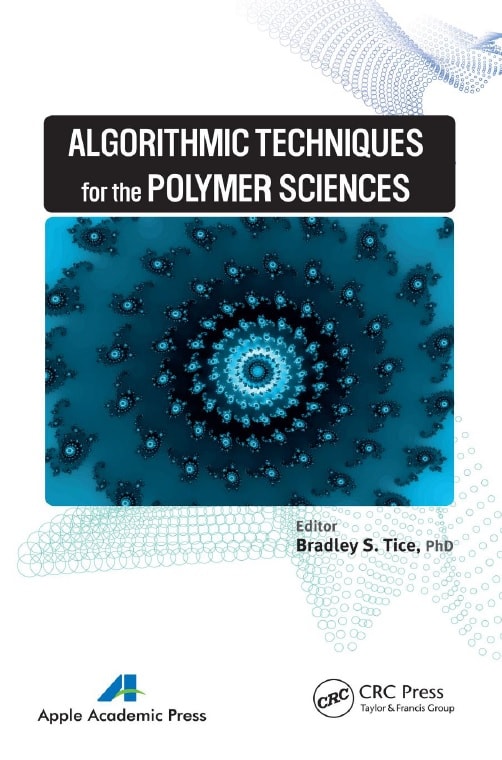
CONTENTS
Preface………………………………………………………………………………………………….vii
Introduction……………………………………………………………………………………………. ix
Literature Review……………………………………………………………………………………. xi
1. Polymers…………………………………………………………………………………………………1
Bradley S. Tice
2. Compression of Data……………………………………………………………………………….9
Bradley S. Tice
3. Natural Language Compression…………………………………………………………….13
Bradley S. Tice
4. Formal Language Compression……………………………………………………………..15
Bradley S. Tice
5. Types of Compression Programs……………………………………………………………17
Bradley S. Tice
6. Algorithmic Compression……………………………………………………………………..19
Bradley S. Tice
7. Chemical Formulas……………………………………………………………………………….23
Bradley S. Tice
8. Fischer Projection…………………………………………………………………………………25
Bradley S. Tice
9. Compression of Polymers………………………………………………………………………27
Bradley S. Tice
10. Line Notation Systems and Compression……………………………………………….29
Bradley S. Tice
11. Current Trends in Research…………………………………………………………………..31
Bradley S. Tice
12. Big Data……………………………………………………………………………………………….33
Bradley S. Tice
13. Modeling Complexity in Molecular Systems: A Revised Edition……………..35
Bradley S. Tice
14. Feedback Systems for Nontraditional Medicines:
A Case for the Signal Flow Diagram………………………………………………………43
Bradley S. Tice
15. Chromatic Aspects of the Signal Flow Diagram……………………………………..53
Bradley S. Tice
16. Junction Graphs……………………………………………………………………………………59
Bradley S. Tice
17. Embedded Symbol Notation Diagrams and Embedded Symbol
Notation Matrix Diagrams…………………………………………………………………….63
Bradley S. Tice
18. Feedback Theory: Properties of Signal Flow Graphs …………………………….75
Samuel J. Mason
19. An Overview of Signal Flow Graphs ……………………………………………………125
Khoman Phang
20. A Theory on Neurological Systems-Part I and Part II…………………………..131
Bradley S. Tice
21. A Theoretical Model of Feedback in Pharmacology Using
Signal Flow Diagrams………………………………………………………………………….135
Bradley S. Tice
Appendix A: A New Foundation for Information…………………………………………153
Appendix B: Compression and Geometric Data…………………………………………..159
Appendix C: The Analysis of Binary, Ternary and Quaternary
Based Systems for Communications Theory………………………………………………..163
Appendix D: The Use of a Radix 5 Base for Transmission and Storage
of Information……………………………………………………………………………………………169
Appendix E: A Comparison of a Radix 2 and a Radix 5 Based Systems………..175
Appendix F: Random and Non-random Sequential Strings Using
a Radix 5 Based System………………………………………………………………………………183
Appendix G: A Comparison of Compression Values of Binary and
Ternary Base Systems…………………………………………………………………………………187
Appendix H: Patterns within Patternless Sequences…………………………………….191
Appendix I: A Radix 4 Based System for Use in Theoretical Genetics…………..193
Appendix J: A Compression Program for Chemical, Biological,
and Nanotechnologies…………………………………………………………………………………197
Appendix K: Statistical Physics and the Fundamentals of Minimum
Description Length and Minimum Message Length…………………………………….205
Appendix L: The Use of Signal Flow Diagrams in Pharmacology………………… 211
Appendix M: Signal Flow Diagrams Verses Block Diagrams………………………..213
Appendix N………………………………………………………………………………………………..217
Appendix O………………………………………………………………………………………………..219
Appendix P…………………………………………………………………………………………………221
A List of the Editor’s Papers on Signal Flow Diagrams………………………………..223
References………………………………………………………………………………………………….225
Index………………………………………………………………………………………………………….239
PREFACE
The monograph addresses the use of algorithmic complexity to perform compression on polymer strings to reduce the redundant quality while keeping the numerical quality intact. A description of the types of polymers and their uses is followed by a chapter on various types of compression systems that can be used to compress polymer chains into manageable units. The work is intended for graduate and post-graduate university students in the physical sciences and engineering.
INTRODUCTION
The monograph examines algorithmic compression techniques for use on polymer chains. The author has previous publications on the area of algorithmic complexity and has addressed their use to polymers in this monograph (Tice, 2009 and 2010). The monograph is arranged into chapters that address polymers, chemical processes, algorithmic complexity, and then applied aspects of algorithmic complexity to polymer chains. Each chapter is a self-contained section that addresses that particular topic and lends itself well to understanding the application and theory of polymer compression techniques.
The monograph addresses large chain and multiple sequence polymers that are currently found in daunting amounts in “Big Data”, and a chapter and extensive appendix sections are added to address the ‘real world’ problems of massive data sets of polymer information.
A polymer is a chemical material that consists of repeating structural components which are formed through the process of polymerization (Wikipedia, “Polymer”, 2013). The word polymer comes from the Greek words “poly” to mean “many” and “meros” to mean “parts” (Borchardt, 1997).
The shapes of polymer chains, molecules linked together to form a sequence of connected molecules, has several types of geometries beyond the linear polymer chains (Hiemenz and Lodge, 2007). Branched and cross linked polymer chains are common and arise from the “backbone” of a linear molecule (Hiemenz and Lodge, 2007). The amount of such polymer branching structure is a branching upon branching of a molecule will result in a network type of geometry that is termed cross linked (Hiemenz and Lodge, 2007). Some multi-branched molecules have discrete units and are termed hyper-branched polymers and other multi-branched polymers known as dendrimers, or tree-like, molecules (Hiemenz and Lodge, 2007).
Co-polymers are repeating units of polymers that have more than one type of repeating polymer unit and a polymer chain that has only a single type of repeating polymer unit is termed homo-polymers (Hiemenz and Lodge, 2007). So, a co-polymer is a series of monomers that repeat in a chain and are bounded by each of their original monomer states (Hiemenz and Lodge, 2007). The tertiary structure of polymer is the “overall” shape of a molecule and formal polymer nomenclature uses the structure of the monomer or repeat unit as a system of identification by the International Union of Pure and Applied Chemistry (IUPAC) (Hiemenz and Lodge, 2007). Monomers and repeat units of monomers are the primary descriptive quality of polymers and are categorized in the nomenclature according to the type of structures involved in the monomers (Wikipedia, “Polymer”, 2013). Single type of repeating monomers are known as homopolymers, while the mixtures of repeat monomers are known as co-polymers (Wikipedia, “Polymer”, 2013). The arrangement of monomers in co-polymers is as follows (Wikipedia, “Polymer”. 2013):
